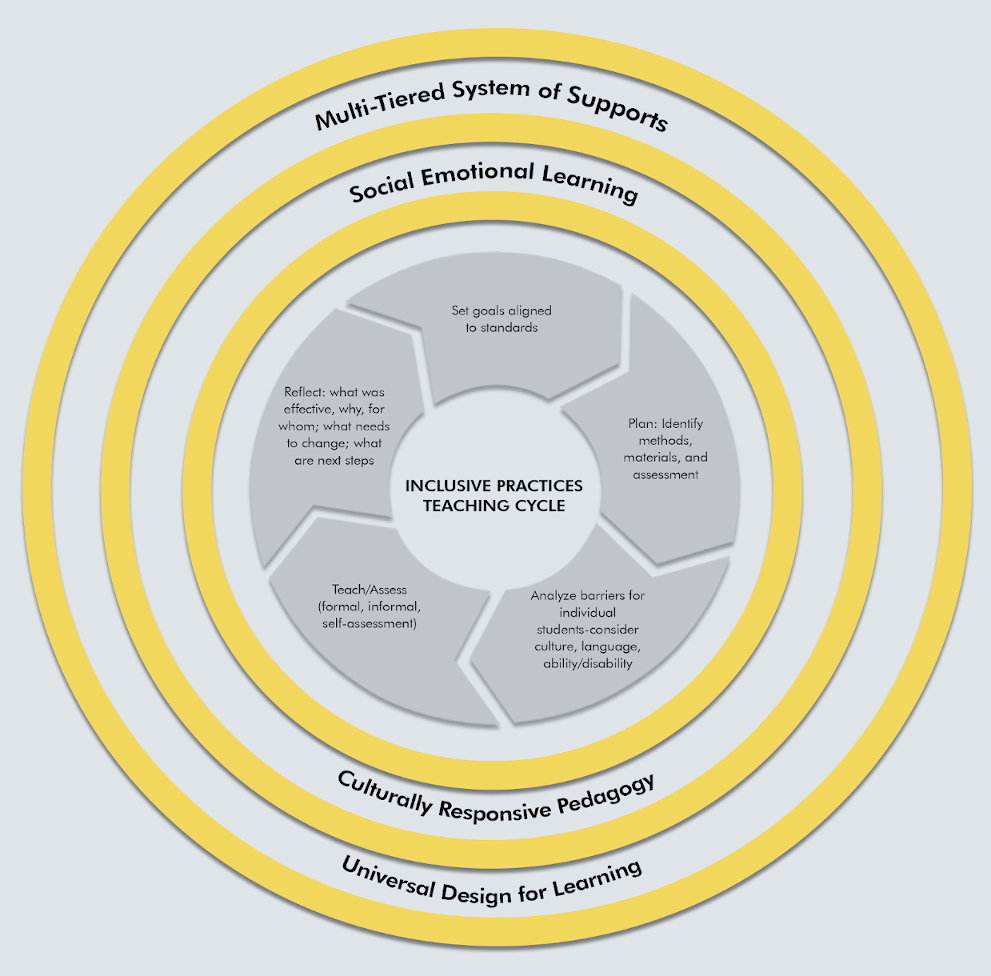Inclusive Practices Teaching Cycle

Definition

This visual cycle represents the teaching cycle for promoting inclusion of all students. Goals/Objectives for the lesson are set that align to the Common Core State Standards (CCSS). Ideally each lesson has content objectives and language objectives in order to support dual language learners (English Learners), and IEP goals are included if the lesson aligns. Next, the lesson is planned. The methods for teaching (i.e., direct instruction, inquiry-based learning) are identified. The methods and corresponding strategies and materials should be chosen based on learning goals as well as students’ strengths and needs. Informal assessments (e.g., checking for understanding) should be planned throughout the lesson and formal assessment (i.e., responses to comprehension questions) at the end of the lesson. Student self-assessment should be done during the lesson. Students assess their own learning by responding to questions and/or reflecting on how well they have met the objective. While planning, considering individual strengths and needs allows for a lesson to be universally designed. Teachers must consider culture, language, and ability/disability. After a draft of the lesson plan(s) has been developed, the lesson should be further analyzed for barriers to access that may still exist for individual students; revising the lesson as needed. They then teach the lesson and assess as planned. After the lesson has been taught, teachers use data from assessment to reflect on what was effective-why and for whom, what are next steps for the groups of students and individual students, and what changes should be made.
The cycle of teaching is implemented within the MTSS model in schools. It can be used in all three tiers of instruction-that is for universal instruction, strategic intervention, and intensive intervention. Tier 2 and Tier 3 intervention will have the added component of additional formal assessment in the form of regular progress monitoring. Culturally responsive and sustaining pedagogy should also frame this cyclical process. The methods/strategies, materials and assessments chosen should be selected considering students’ cultural assets. Social Emotional Learning (SEL) provides the interactive context to promote an educational environment that supports each child’s social and academic potential.

